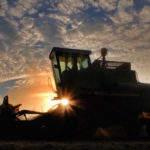Building homes, building hope
When Tropical Cyclone Winston ravaged over Fiji last year, it left devastating ruin in its wake. Adrian Arndt went to the village of Nailawa to help with the rebuild and found incredible resilience amid the destruction.
Have you ever closed your eyes really, really tightly and wished for something? I used to do it all the time when I was a little kid. I would often sit, eyes clenched tight, hoping, wishing and even occasionally praying for my latest wish to come true so I could live happily ever after.
Now with those same memories, put yourself into Fiji, a glamour holiday destination of the Pacific. The date is the 20th of February 2016; however, the scene in Fiji is anything but the postcard perfect pictures that we are used to seeing.
In the village of Nailawa, a remote, self-sufficient community about three hours north of Nadi, six elderly women are crammed into a two by two toilet cubicle, holding hands, reciting the Rosary. Their grandchildren are huddled under tables, unsure whether to cry, scream or be silent. One shelter, normally home to five residents, is struggling to accommodate the fifty plus people that are gathered together inside. All of them sitting, some on top of each other, eyes clenched tight, hoping, wishing and praying that the impending arrival of Tropical Cyclone Winston shows them some mercy.
Their eyes remained clenched for a little over two hours. The deafening sounds of angry winds and torrential rains punctuated by devastating realisations of the power of this cyclonic episode. Fiji had seen cyclones before, but nothing like this. By around 9pm an eerie sort of silence gripped Nailawa as the 300 kilometre an hour winds began to subside. Those same clenched eyes began slowly to open, only to be confronted by blinding scenes of utter devastation.
Loose pieces of tin were strewn across the village, along with the few personal belongings that were not completely destroyed. Of the thirty two houses in the village only six remained. Warm hugs were shared and tears were shed, not necessarily only out of sadness, but also out of happiness for the fact that everyone in the village survived. Other parts of Fiji were not so lucky, but Nailawa, despite losing almost everything, had lost no one.
Fast forward nine months and I had the privilege to visit Nailawa as part of a charity group to assist with the rebuild. The first sign of Winston when driving into the village is the church. Still standing but missing a roof. A central point of community pre-cyclone, for us it stood as a reminder of the true force Winston brought. A walk around the village only emphasised this further as concrete slabs, once supporting a house, were now bare. For a group of foreigners, who saw the devastation only through the screens of our televisions, these sights were quite overwhelming.
However, despite the roofless church and destroyed houses, there wasn’t bitterness towards Winston. Yes, there was the trauma that the locals will take to their graves, but above all, there was an overwhelming sense of resilience. A resilience that to us as a group seemed unbelievable but incredibly inspirational.
Our task was to build two transitional shelters over the course of the week which would go to two elderly women, who were both living in makeshift shacks, put together with scrap metal after the cyclone. Over the course of a challenging week, we finished with two completed homes. Our limited building skills were compensated for by the work of building staff from Habitat for Humanity, a global not-for-profit actively working in Fiji to rebuild post Winston.
As a group of volunteers from Australia, the successful completion of these two houses was a joyous moment. However, for the village it was much more than this. These two shelters were symbolic of so much more than just a place to live. They symbolised hope and they also symbolised the future. As a group of eleven volunteers from Sydney, to be able to contribute to the future of a community is exceptional. To do so for a village like Nailawa that has been rocked to its core – well, that is incredibly special.
As a country, the Australian Government has donated around $35 million dollars in humanitarian assistance to Fiji post Winston. The assistance package provided support across four main areas: life-saving relief, defence force support, early recovery and reconstruction. However, perhaps the most important thing we have given can’t be measured, nor can it be accounted for in a budget. After spending time in the ‘real’ Fiji, I feel that what we might have given is a sense hope. Of course the financial assistance is critical to rebuilding a sustainable country, but for Nailawa, and remote villages like it, this sense of hope is priceless.
In Nailawa the singing never stopped, but the last few months has seen the gusto for song return. The education, while there is no classroom, is continuing inside a tent. The crops, which were the main source of income, are being re-grown. Village life, while possibly never being the same anymore, is helping to heal permanent scars. Winston, a name that brought with it incredible adversity, is now also a name that brings hope.
As we begin 2017, my thoughts turn to last year and what happened in Fiji and the village of Nailawa. A year initially defined by disaster, but as I saw first-hand, a year also defined by resilience. For 2017 I will at some point find myself clenching my eyes, hoping, wishing and praying for my own wish to come true.
My wish this year is that we continue to offer hope and actively support the future of villages like Nailawa that possess such a great sense of spirit. It’s a spirit of community that as a group of Australians we feel incredibly proud to have contributed to.
Adrian Arndt, 26, is a passionate advocate social justice, particularly around equal access and opportunity for Indigenous Australians. He has spent time in a number of regional communities working with Indigenous groups to understand issues faced and assist with driving positive change. Adrian is also actively involved in Sydney based charity, Communities for Communities, which works to build community connections and spirit both in Australia and abroad. He has spent time in remote regions of Indonesia and Fiji building houses for displaced refugees and victims of Tropical Cyclone Winston.














